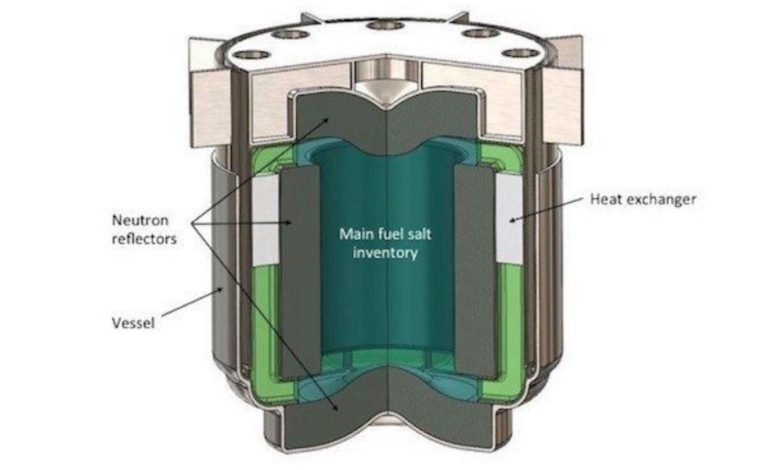US progresses with new generation of atomic reactors

Following swiftly in the wake of COP26, the UN-backed international climate summit, another step has been taken towards getting atomic reactors onboard merchant ships.
Southern Company, an American utility firm, has signed an agreement with the US Department of Energy to demonstrate the world’s first fast-spectrum salt reactor in collaboration with Bill Gates-chaired TerraPower and Idaho National Laboratory.
The molten chloride reactor experiment is part of a five-year, $170m cost-shared funding agreement which will provide operational data for fast-spectrum salt reactors with partners looking to then harness the technology to power the next generation of commercial ships. TerraPower and Southern Power are also working with Mikal Bøe-led CORE POWER to develop this new atomic technology for ships. CORE POWER now has the backing and investment from a host of owners who, combined, control more than 2,000 ocean-going vessels.
“The molten chloride reactor experiment will support the commercialization of a revolutionary technology on a timescale that addresses climate change benchmarks and delivers on Southern Company’s goal of net-zero greenhouse gas emissions by 2050,” said Dr Mark Berry, Southern Company vice president of R&D.
The reactor experiment will be the world’s first fast-spectrum, salt-fuelled nuclear fission reactor to go critical, meaning that it is operating on a self-sustaining nuclear chain reaction.
The Office of Nuclear Energy in the US has also just announced $8.5m in funding to help commercialise promising advanced nuclear technologies, including TerraPower’s molten salt reactor design.
Dr Kathryn Huff, the principal deputy assistant secretary for nuclear energy, commented: “Advanced reactors will completely change the way we engineer, build, and operate nuclear reactors.”
Other notable marine atomic developments are taking place in South Korea where shipbuilding major Samsung Heavy Industries has teamed up with the Korea Atomic Energy Research Institute while Seaborg Technologies in Denmark is building floating power barges, and the Canadians are working with NuScale to develop marine power stations. The Russians, meanwhile, already have the market domestically and are now touting a huge new next generation nuclear-powered icebreaker as further proof of their maritime atomic expertise. Not to be left out, Chinese scientists are developing their own atomic propulsion technologies for both merchant marine and offshore facilities.

Compact fast spectrum molten salt nuclear reactors still need considerable developmental effort. There are existing nuclear reactors being utilized for submarines, these should be investigated for ship propelling applications.
As I understand it, the big challenge there is that governments won’t allow nuclear fuel, of the type and quantity required by those types of reactors to be accessible to anyone other than the military. For civilian reactors, the quantities allowable are so small that the reactors are practically limited to the ~1-2MW range, which isn’t enough for these applications. Different reactors are therefore needed for civilian use. I hope my understanding is wrong, or that the situation changes!